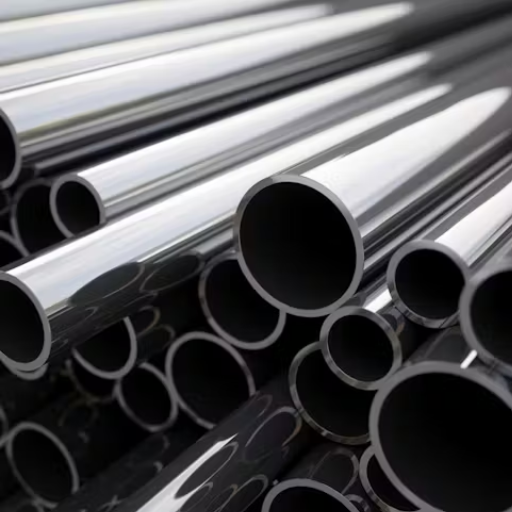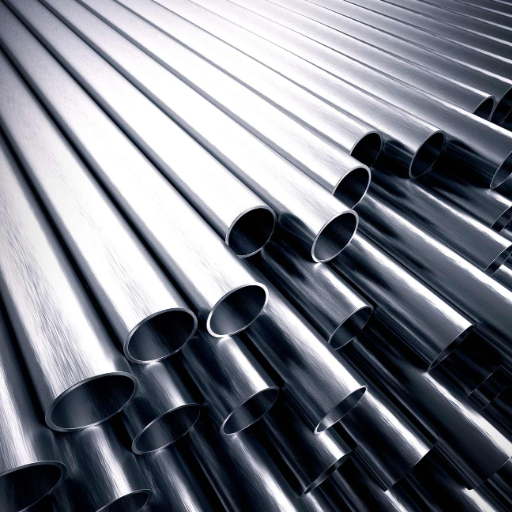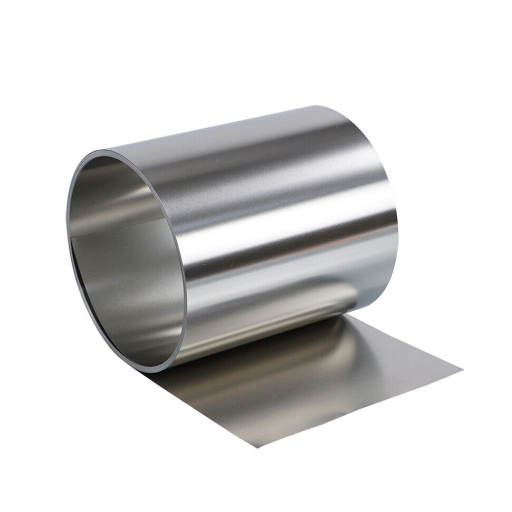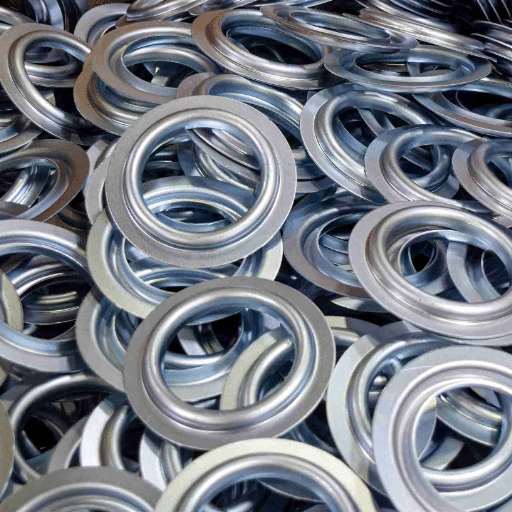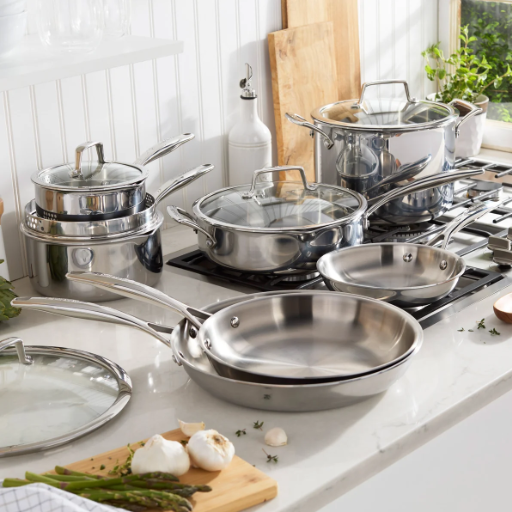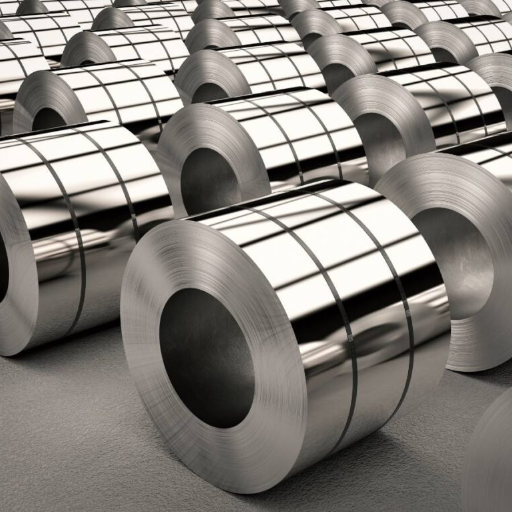Among the different choices available in the market, the 4 x 8 galvanized sheet metal has proven to be an exceptionally popular option for many sectors due to its durability, versatility, and economical pricing. From construction, to manufacturing of automobiles, the other unique features such as adaptable corrosion resistance, strength and others makes it an invaluable asset for different professions. But what exactly is galvanized sheet metal and why is the 4 x 8 sheet a preferred standard? This guide will answer those questions while also providing information regarding the manufacturing process, advantages, and other practical uses. Builders, engineers, and even hobbyists will find this article useful because of the knowledge it provides when working with such materials. So, let us highlight everything you should know about 4 x 8 galvanized sheet metal.
What is 4 x 8 Galvanized Sheet Metal?

4 x 8 galvanized sheet metal is a steel sheet measuring four feet in width and eight feet in length. It is coated with zinc to lower the chances of rust and corrosion. The protective zinc coating increases it’s appeal for both indoor and outdoor use. Versatile and strong, this type of sheet metal is a must in construction, manufacturing, and even DIYs as it is also resistant to environmental damage. The uniform dimensions of this sheet metal also allows for ease of manipulation and integration into numerous designs and structures.
Understanding the Dimensions of 4 x 8 Sheets
4 x 8 refers to the measurements of the sheet in feet; 4 feet wide and 8 feet long. This is also 48 and 96 inches long. The 4 x 8 format is chiefly employed within construction, metalworking and furniture production as it helps facilitate seamless integration with other materials. Most industries prefer the 4 x 8 measurement due to it providing consistency. Moreover, the thickness is material dependent, and can range anywhere from 0.5 millimeters with thin metals such as aluminum, to plywood and other structural materials which can have several inches of thickness. The size makes it easier to transport and store due to its conformity with common transportation and shelving units.
What Does Galvanization Mean?
Galvanization is the application of a protective coating consisting of zinc onto iron or steel consummated galvanization, either through hot-dip where the metal part is submerged into molten zinc or electro where current is passed to lay a coating. This covers the metal barrier as it acts against the environment through moisture and oxygen, the atmosphere working together to build rust on the metal. Also, there is the need for covering which allows for corrosion where the metal consumes faster enabling the iron or steel to be preserved where even the cover will no longer be shielded from damage. This is important in construction and car manufacturing or any kind of energy infrastructure service where much of precision, cost and efficiency is vital.
Common Uses of Galvanized Sheet Metal
Galvanized Sheet Metal is one of the most useful materials because it has a lot of applications in various industries. They use it in automobiles, construction, appliances, electricity, and farming. They value it Greatly due to its quality: cheap price, long durability, and resistance to rust. In construction, they use it to create roofs, walls, gutters, and supporting frames. It is very popular in the automobile industry due to the fact that they use it to manufacture vehicle body panels. Exposure to moisture and salty roads would lead to rapid rust, but they increase the lifespan of the components by using galvanized steel. Furthermore, energy companies value the sheet metal to build the frameworks of power transmission towers, wind turbines, and solar panels. It is very important and valuable for the consumers due to the integrity and durability it provides against the harsh external conditions. Last but not least, the sheet metal is popular for building kitchen appliances.
What are the Different Gauges of Galvanized Steel Sheets?

The Gauge of galvanized steel sheets indicates their thickness and ranges from 30 (approx. inches thick) to 10 (approx. 0.1345 inches thick). Each application has its common use. 10-16 gauge sheets used for structural and industrial applications which require high durability, thinner sheets 26-30 gauge tend to be used in lightweight or decorative applications. These measurements correspond with industry standards for the appropriate use in various fields.
22 Gauge vs 16 Gauge: Which is Better?
The decision on which to use from the 22 gauge and 16 gauge options largely depends on the specifics of the project in question. The 22 gauge is given preferential treatment due to being around 0.0299 inches thick making it lighter, while providing plenty of flexibility. This makes 22 gauge an excellent choice for HVAC ductwork or roofing panels. The 16 gauge, which is 0.0598 inches thick, is far better for use in construction thanks to needing far greater durability and strength making it suitable for industrial equipment, automotive panels or heavy-duty construction work.
The choice of either gauge should consider factors such as weight tolerances, load bearing requirements, and the specific environmental condition of the area. 16 gauge excels in physical wear and long-term reliability, while 22 gauge materials are bests where cost efficiency and corrosion resistance are needed. Making an evaluation guarantees a decision that meets the operational and financial expectations.
How to Choose the Right Gauge for Your Project?
When making a gauge selection for a project, it is crucial to comprehend the practical limitations and requirements. Begin with the structural prerequisites—what is the load capacity? Is there impact resistance? How durable is it? Projects that mandate robust materials for heavy impact or high weight sustainment require thicker gauges. 16 gauge, for example, is a thicker option that provides strength and durability for longer life cycles. 22 gauge materials would be more appropriate for applications that prioritize flexibility, ease of handling, or lower material costs.
The environmental context is another decisive aspect that must be addressed, specifically how the material will be applied. Ideally, if the surroundings have a lot of moisture or corrosive materials, selecting the gauge which has the best defendable corrosion resistance is also essential for any gauge regardless. Also, having knowledge of the particular industry’s needs such as construction regulations, safety codes, and other industry standards is important in the regard to making sure compliance is met. Using accurate values and those from the specific project will simplify the selection process, guaranteeing that the chosen gauge will meet all functional and legal requirements.
What are the Benefits of Using Galvanized Steel Sheets?

- Corrosion Resistance
Galvanized steel sheets are coated in a layer of zinc, making them incredibly resistant to rust and crosion, more so protecting their durability if placed in moist or harsh environmental conditions.
- Longevity
Long term maintenance fees are reduced while greatly extending the lifespan of the steel because of how easily the zinc coating shields against damage northern galvanized steel sheets incur.
- Cost-Effective
Although the up front costs could be significant, the long term savings, due to lowered maintenance requirements, make the galvanized steel a commercially strategically vascular investment.
- Strength and Versatility
The adaptability of galvanized sheets extends their use across construction, automotive, and others, without compromising their strength.
- Environmentally Friendly
Sustainability in construction and manufacturing processes is always a welcome change, and with those changes comes eco-friendly materials that can be recycled, such as galvanized steel.
Durability and Longevity of Galvanized Steel
Galvanized steel is highly appreciated for its remarkable strength and long service life which often exceeds 50 years in the field and up to 20-25 years in harsh urban or coastal surroundings. The protective zinc coating acts as a shield against moisture and oxygen which causes rust, that’s why it extends its lifetime for so long. Additionally, even if the surface coating is damaged, the cathodic protection of surrounding zinc which gets sacrificed to protect the exposed steel will greatly help.
For very recently developed methods of galvanization, the addition of sophisticated alloyed layers have greatly improved the material’s resistance to mechanical wear and corrosion. Research shows that throughout the life cycle of galvanized steel, it requires very little maintenance. This is advantageous for both industrial and structural uses. These traits enable it to be the ideal candidate for infrastructure construction, such as bridges, pipelines, and skyscrapers that are subjected to harsh environmental conditions.
Corrosion Resistance in Various Environments
Corrosion resistance is very critical for the materials for different parts of the world. A good example is galvanized steel, which performs exceptionally well due to the protective zinc coat which wards off moisture and oxygen. It also resists saltwater corrosion in marine environments, and studies show phenomena where considerably fewer rust scales form even after long exposure. Construction and manufacturing areas with urban pollution laden with sulfur dioxide also has decreased oxidation with the use of galvanized coating. This occurs due to the zinc oxidation layer protective barrier where the zinc sacrificially oxidizes to shield the steel underneath from oxidization. Laboratory tests and field studies confirm that galvanized coating steel can endure multiple decades without losing their structural integrity in those regions and thus minimizing repairs and replacements. Such qualities make it essential for infrastructure projects simultaneous faced with diverse and perennial challenging environmental conditions.
Cost-Effectiveness of Galvanized Sheet Metal
Galvanized sheet metal is beneficial in construction and industrial activities because it is highly durable and reliable with low maintenance. The protective zinc coating slows down the rate or repairs needed when compared to uncoated steel, thus offsetting the initial cost of galvanization throughout its service life. Research indicates that rural regions can maintain hardened steel structures for over fifty years while urban and coastal cities can maintain them for twenty to twenty-five years with minimal maintenance. Furthermore, the protective coating provides economic value by minimizing operational downtime associated with repairs as well as corrosion damage. Moreover, their industrial value and operational efficiency is significantly improved alongside operational reliability as galvanized materials can take less time and resources to recycle than other materials.
How to Work with 4 x 8 Galvanized Steel Sheets?

To handle galvanized steel sheets of a size 4 x 8, consider the following processes:
- Handling and Safety
Cutting or welding should be executed in places with good air circulation to not breathe in zinc vapors, and wearing safety glasses and protective gloves is a good idea due to risks of injury from the sharp edges of galvanized steel.
- Cutting
Cutting or welding should be executed in places with good air circulation to not breathe in zinc vapors, and wearing safety glasses and protective gloves is a good idea due to risks of injury from the sharp edges of galvanized steel.
- Drilling
Always secure the steel sheet before drilling at the appropriate drill location. Use a drill bit designated for metal work, cobalt or titanium coated ones work best for accuracy.
- Joining
For sheet joining, consider applying bolting, riveting, or welding. Bolted joints need to be protected from corrosive environments. If using welding, handle with care so that no zinc is released by grinding off the galvanized coating adjacent to the weld line.
- Protecting the Coating
After cutting or drilling, application of a zinc-rich cold galvanizing spray or touch-up paint helps in maintaining corrosion resistance for exposed edges.
Cutting Techniques for Steel Sheets
The best engineering practices for cutting steel sheets involve the right methods, tools, and care to achieve deformation, distortion, and clean edges. These practices include mechanical, thermal, and abrasive techniques. Mechanical tools such as power and guillotine shears are ideal for straight cuts. Sheers and guillotine blades also enable slices with a good deal of speed. More detailed designs are made with the use of CNC-powered laser cutters. Laser cutters are now considered a convential industry standard as they inflict very little heat to surrounding material.
Plasma cutting technology is best recommended for rougher applications involving rapid cutting of thicker sheets. Powered lasers are effective but incur severe levels of detached and uncontrolled heating. Heavy-duty cutting of steel sheets can alternatively utilize oxy-fuel techniques, however, these means are greatly reliant on post processing and have considerable allowances for smoothed steel. Waterjet cutting is more consistent than the previously mentioned technique and allows for a fair amount of tolerance for heat expansion while maintaining form. Selecting the right-hand tool is achieved with consideration of steel thickness, design precision, and level of detail finishing touches needed at the end of the cutting. The best results for operators and users alike are gained from up-keeping machinery used in cutting.
Joining Methods: Welding vs. Bolting
With welding and bolting as methods for joining components of steel, each has its unique perks and restraints based on the technology being used as well as the project at hand. To weld is to create a permanent, inflexible seam by melting materials which provides stronger joints that bear greater loads. This is useful in places with extreme demands for structural strength such as bridges or buildings or large pieces of machinery. Yet, welding is also the most problematic process since its quality demands absolute execution. Severe issues, like porosity and cracking, need skilled personnel to maintain excellent levels of quality control. Also, the thermal effects of welding may change the material in some cases which would need additional work after welding.
In comparison to welding, bolting provides a more versatile, albeit temporary or semi-permanent, connecting solution. Joints bolted together are simpler to assemble and disassemble, making this technique favorable in scenarios that require modular designs or facilitate future modifications. Certain parameters such as the grade and coating, bolt components withstand environmental factors such as temperature changes and corrosion. The skills and resources needed to secure a bolted assembly are minimal when compared to welding, leading to a decrease in overall fixed labor costs. As there is little specialization required for bolting, distortions caused by extreme temperatures are also minimal. Conversely, bolted joints are prone to undesired rotation in dynamic or vibratory environments which could result in scheduled inspections and tension readjustments.
In the end, selecting welding or bolting is determined by the load requirements, environmental factors, budget, and maintenance. Further innovations in both fields, like automated welding systems and high strength bolting, continue improving their uses. This makes it all the more important for engineers and fabricators to evaluate all project considerations thoroughly.
Where to Purchase 4 x 8 Galvanized Sheet Metal?
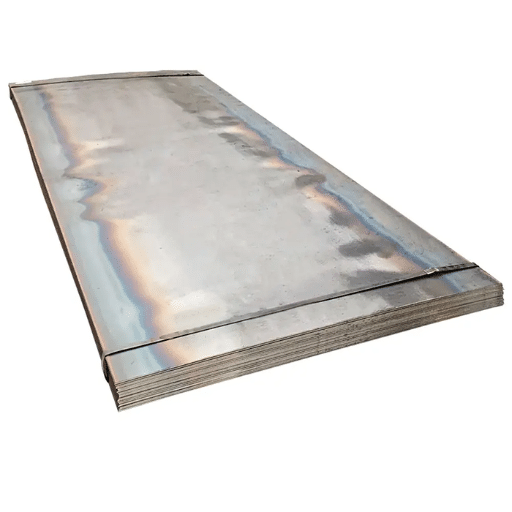
You can find 4 x 8 galvanized sheet metal from multiple trusted providers including:
- Do It Yourself (DIY) Stores: Galvanized sheet metal of this dimension is available to the public at bulk and unit purchase at Home Depot and Lowe’s.
- Metal Distributors: More variety of galvanized sheet metal including custom orders is available from Online Metals or Metal Supermarkets.
- Commercial Suppliers: Grainger or McMaster-Carr customize metal products to suit industrial applications and handpick their stock. It is common to find quality sheet metal with low tolerances and high detail.
- Local Metal Crafters and Shops: Some local shops and metal crafters sell galvanized sheet metal. They might have cutting services available and may deliver the items for your convenience.
As with any supplier, check for material availability, pricing, and delivery services as those vary by region or supplier.
Best Suppliers for Galvanized Steel Flat Sheets
In search of suppliers for galvanized steel flat sheets, there are a number of well-known and trusted companies with many positive reviews through-out the industry which rank them for their value, customer service and hold in the industry:
- Grainger
Grainger is one of the top suppliers for industrial goods such as galvanized steel flat sheets. They are also described as being able to ship internationally which benefits clientele with large orders. It also carries an extensive product catalog that features numerous galvanized steel flat sheets of varying size and depth, ensuring bulk industrial orders will not be a hassle.
- McMaster-Carr
Known for their unmatched customer-service and swift delivery, McMaster-Carr earns high praise for stocking galvanized steel flat sheets on all grades for diverse industries. With unmatched delivery times, wide range of products, and accurate technical descriptions, customers know they will get the right material to fit their specifications.
- Ryerson
Ryerson is a leader in the metal supply industry, focusing on hot-dipped galvanized steel products. They offer flat sheets in various sizes and coatings. Their advanced processing services including custom cutting and shearing provide greater ease in meeting specific requirements. Like many companies today, Ryerson also practices corporate social responsibility by taking strides toward sustainable sourcing and production.
- Metals Depot
Metals Depot offers galvanized steel flat sheets in standard and custom dimensions. They cater to both small and large-scale projects, providing quality galvanized steel. It is easy to place an order through their highly intuitive website, with shipping available all over the United States. Metals Depot also has an industry-leading reputation when it comes to product accuracy.
All of these suppliers stand out individually due to their broad and detailed inventory, precise technical data, and numerous value-added services. Each company noted is among the country’s leading suppliers of galvanized steel flat sheets. When checking suppliers, lead times, clear pricing policies, and customization options should always come first to suit specific project needs.
Reference Sources
-
National Material: Highlights the use of hot-galvanized steel in phone wiring and equipment boxes to reduce damage and maintenance needs. Read more here.
-
South Atlantic: Lists common uses such as handrails, canopies, and solar panels, emphasizing its role in outdoor structures. Read more here.
-
Worthington Steel: Explains its extensive use in construction, particularly for roofing and wall panels, due to its corrosion resistance and strength. Read more here.
-
GSA: Describes the galvanizing process and its purpose of protecting iron or steel from corrosion. Read more here.
Frequently Asked Questions (FAQs)
Q: What is a 4 x 8 galvanized sheet metal?
A: A 4 x 8 galvanized sheet metal is a steel sheet that measures 4 feet by 8 feet, typically coated with zinc to prevent rust and corrosion. It is available in various thicknesses, including common gauges like 20.
Q: What are the benefits of using hot rolled steel for 4 x 8 sheets?
A: Hot rolled steel sheets are known for their strength and ductility. They are easier to work with and can be easily shaped or welded, making them suitable for various applications in construction and manufacturing.
Q: How thick are the 4 x 8 galvanized sheet metals available?
A: The thickness of 4 x 8 galvanized sheet metals can vary, with common options including 20, 18, and 16 gauge. The thickness is an important factor to consider based on the intended application.
Q: Can I use cold rolled steel sheets instead of galvanized sheets?
A: Yes, cold rolled steel sheets can be used as an alternative; however, they are not galvanized and may require additional protective coatings to prevent rust. Cold rolled sheets typically have a smoother surface finish compared to hot rolled options.
Q: What applications are 4 x 8 galvanized sheet metals commonly used for?
A: These sheets are commonly used in the construction of roofs, walls, and panels, as well as in manufacturing appliances and automotive components due to their durability and resistance to corrosion.
Q: How do I ensure the surface of the galvanized sheet is smooth?
A: To ensure a smooth surface, it is advisable to choose high-quality galvanized sheets and inspect for any defects. Additionally, proper handling and storage can prevent scratches and imperfections.
Q: Is it possible to cut a 4 x 8 ft galvanized sheet to smaller dimensions?
A: Yes, 4 x 8 ft galvanized sheets can easily be cut to smaller dimensions using appropriate cutting tools such as shears or saws, depending on the thickness of the material.
Q: What is the difference between hot rolled and cold rolled steel sheets?
A: The main difference lies in the manufacturing process; hot rolled steel is processed at high temperatures, which makes it easier to shape, while cold rolled steel is processed at room temperature, resulting in a smoother finish and tighter tolerances.

